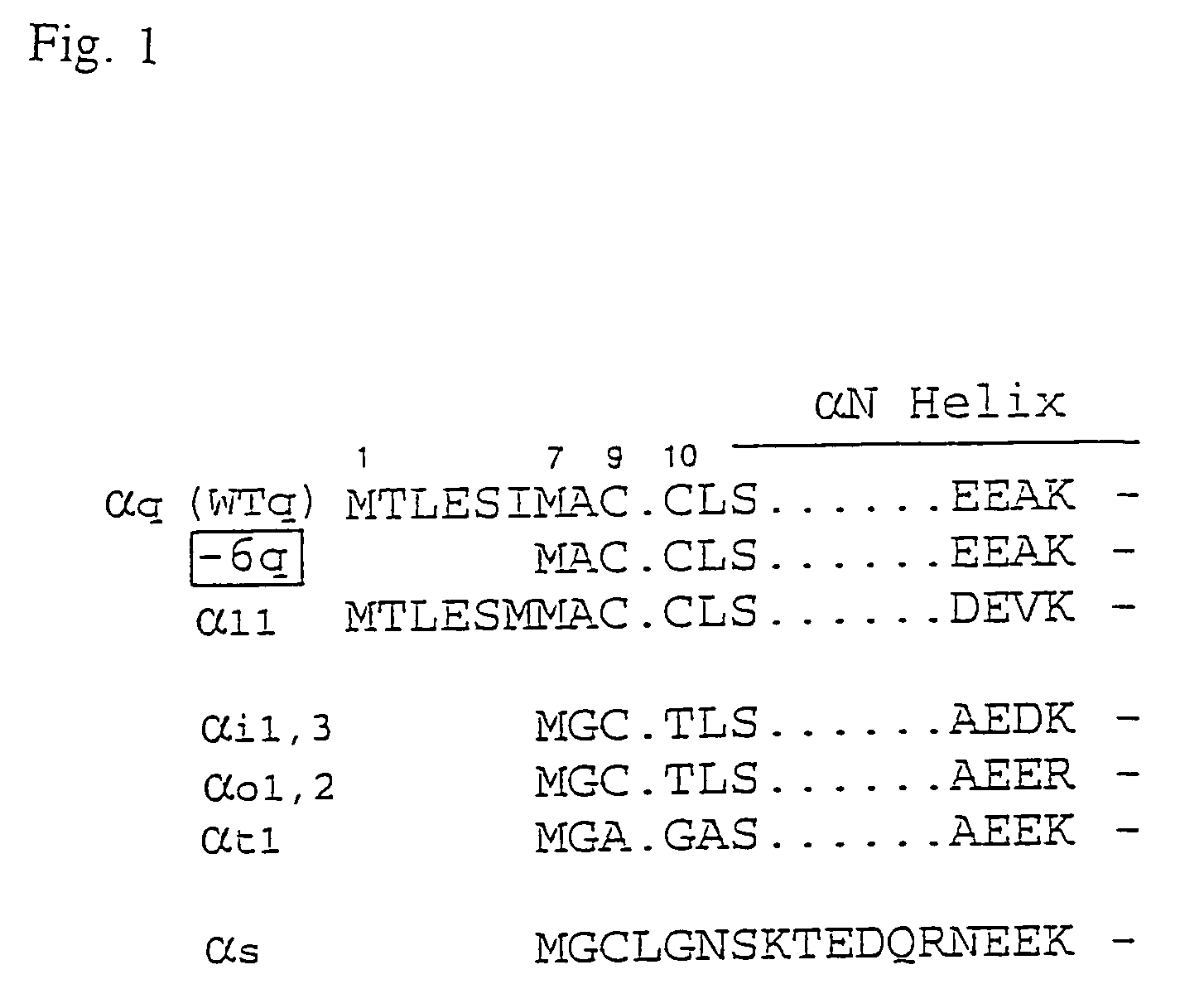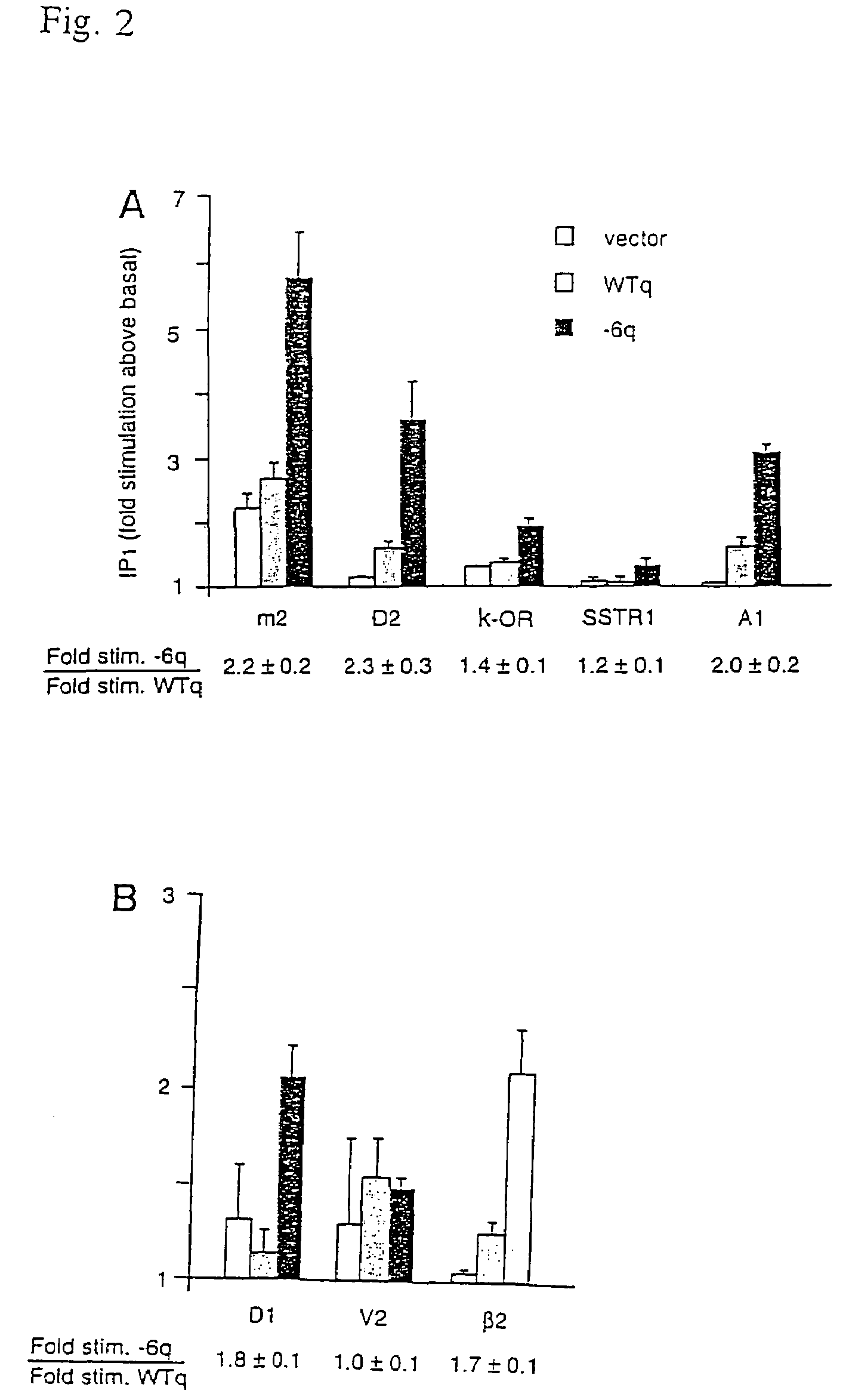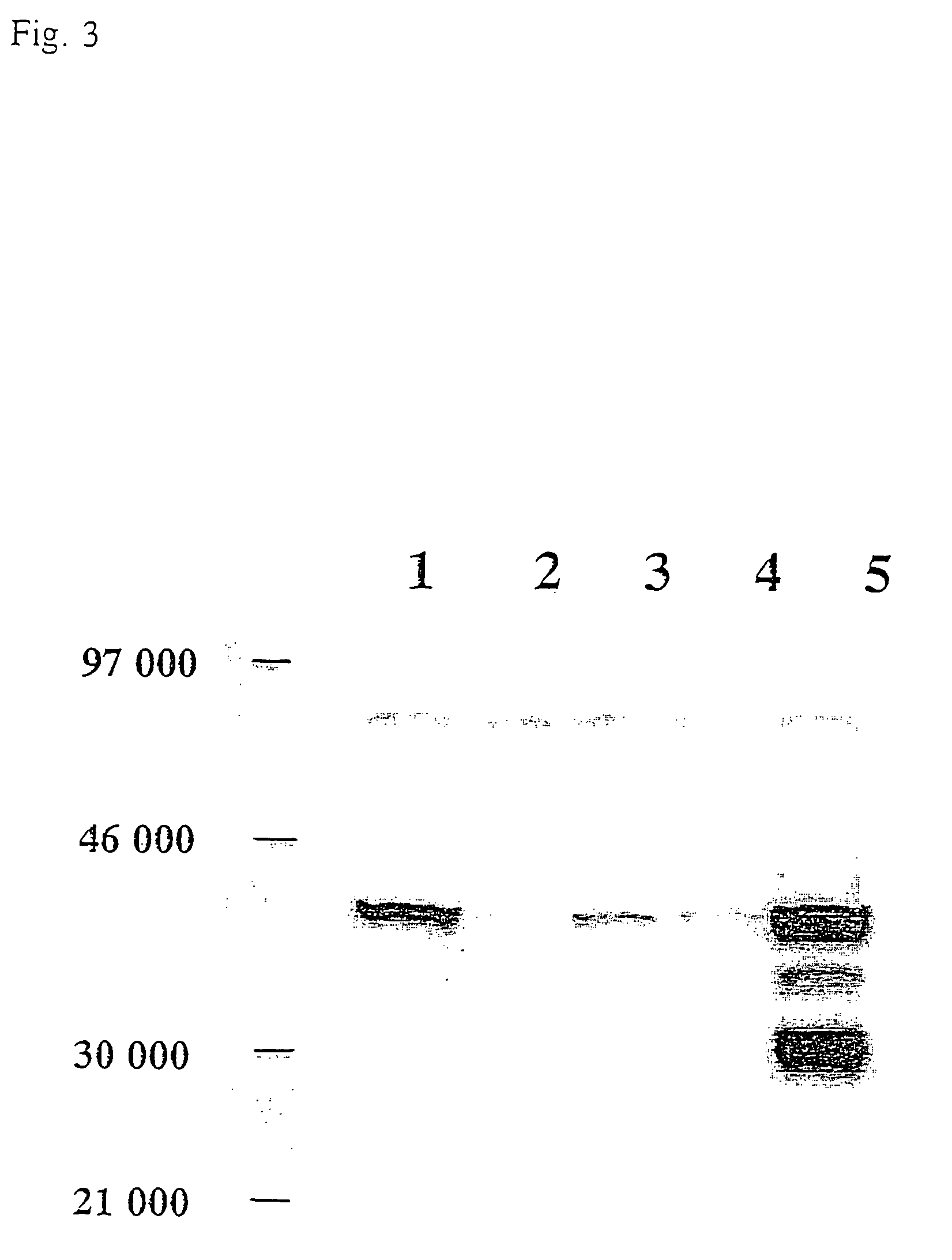Process for identifying modulators of G-protein-coupled receptors
a technology of gpcr and modulator, which is applied in the field of process for identifying modulators of gprotein-coupled receptors, can solve the problems of gq/gi fusion constructs, inability to activate some gpcrs, and great hindrance to specificity in identification
- Summary
- Abstract
- Description
- Claims
- Application Information
AI Technical Summary
Problems solved by technology
Method used
Image
Examples
example 1
Activation of a Signal Transduction Pathway via the Gα-Protein Mutant −6q by Various Receptors
[0066]COS7 cells were cultured in DMEM (Dulbecco's modified Eagle's medium) with 10% FCS (fetal calf serum) at 37° C. (5% CO2). For transfections, 1×106 cells were seeded in 100-mm plates. About 24 hours later, the cells were cotransformed with the expression plasmids αq or −6q (1 μg DNA / 100 mm plate) and, in each case, one of the following receptor constructs (4 μg DNA / 100 mm plate): M2 (muscarinic receptor in pCD), D2 (dopamine receptor in pCDNAI), kappa (opioid receptor in pCDNA3), SSTR1 (somatostatin receptor in pCMV), A1 (adenosine receptor in CDM7), D1 (dopamine receptor in pCNAI), V2 (vasopressin receptor in pCD-ps), β2 (adrenergic receptor in pSVL).
[0067]About 24 hours after transfection, the cells were divided into equal portions in 6-well plates and 3 μCi / ml 3H-myo-inositol (20 Ci / mmol) in DMEM was added. After incubation for 24 hours, the cells were incubated with HBSS (Hank's Ba...
example 2
Preparation of Highly Expressed Mutants of Gα Proteins with Broad Receptor Specificity
[0073]Hybrid G-protein α subunits, that lack the six highly conserved amino acids of the amino terminus and that simultaneously have either an αi or αs sequence at the C terminus were constructed. They are denoted −6qi4 or −6qs5, corresponding to the αi sequence or αs sequence they contain. The construct −6qi4 links the Gs-coupled receptors and also some of the Gi / o-coupled receptors, such as the SSTR1 and edg5 receptors, to the PLCβsignal transduction pathway. Gα16 cannot link the edg5 receptor to the PLCβsignal transduction pathway. Gα16 is a G-protein with broad receptor specificity and has been disclosed in WO 97 / 48820 (title: Promiscuous G-protein compositions and their use).
[0074]The construct −6qs5 links the Gi / o-coupled receptors and the Gs-coupled receptors to the PLCβ signal transduction pathway and also recognizes receptors such as the dopamine D1 receptor or the adrenergic β2 receptor.
[...
example 3
Stimulation of Various Highly Expressed Gα-Proteins with Broad Receptor Specificity by Different Receptors
[0079]Stimulation of the highly expressed Gα variants, −6qs5myr and −6qi4myr, by different receptors is depicted in FIG. 5 and FIG. 6. FIG. 5 shows that −6qi4myr is connected by Gi / o-coupled receptors (for example, dopamine D2, edg5, CCR5, SSTR1, and KOR) to the PLCβ signal transduction pathway and leads to a strong signal which is proportional to Ca2+ release. The controls used were a vector construct and the Gα16 protein (G16). FIG. 6 shows that Gs-coupled receptors are linked to the PLCβ signal transduction pathway by −6qs5myr. The G-protein Gα16 (G16) acted as a control.
[0080]To experimentally determine the released Ca2+ concentration with the aequorin system, CHO cells were cotransfected with the apo-aequorin expression plasmid cytAEQ / pCDNAI, the receptor DNA mentioned above (for example, SSTR1, KOR, D2, D1, or β2) and the G-protein α subunits Gα16 and −6qi4myr with the use...
PUM
| Property | Measurement | Unit |
|---|---|---|
| concentration | aaaaa | aaaaa |
| conformational | aaaaa | aaaaa |
| size | aaaaa | aaaaa |
Abstract
Description
Claims
Application Information
 Login to view more
Login to view more - R&D Engineer
- R&D Manager
- IP Professional
- Industry Leading Data Capabilities
- Powerful AI technology
- Patent DNA Extraction
Browse by: Latest US Patents, China's latest patents, Technical Efficacy Thesaurus, Application Domain, Technology Topic.
© 2024 PatSnap. All rights reserved.Legal|Privacy policy|Modern Slavery Act Transparency Statement|Sitemap



